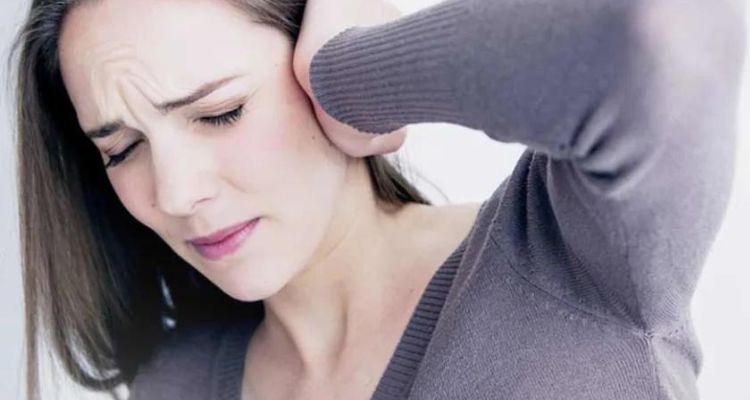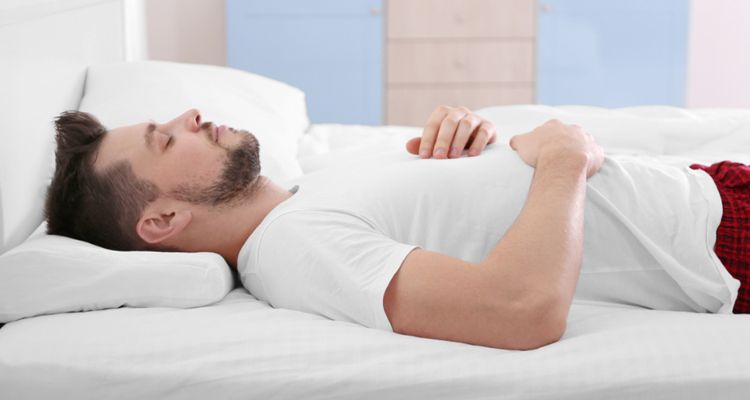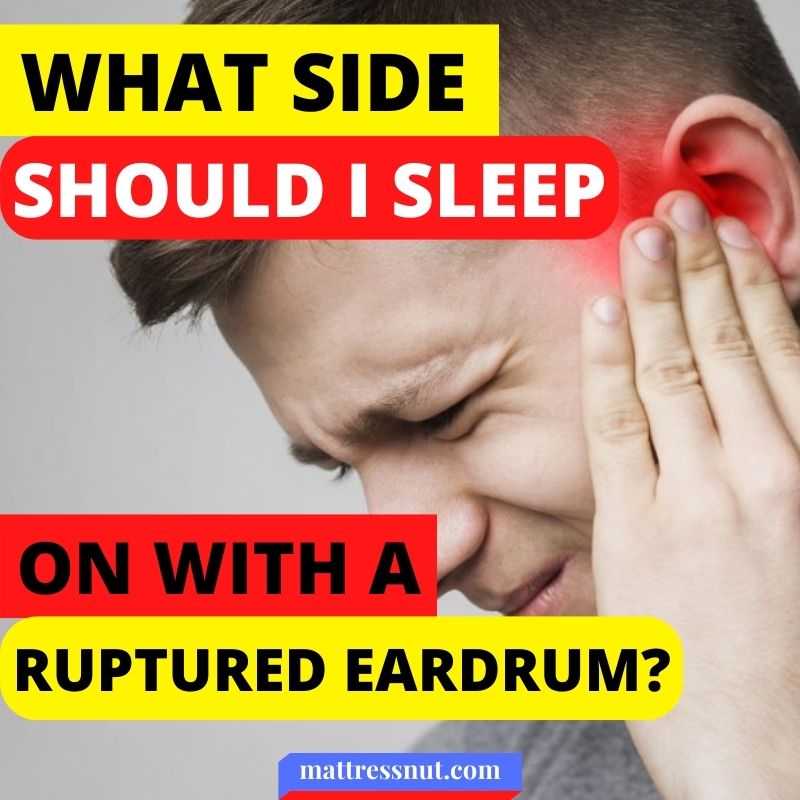Mother nature has made every living thing in its perfect shape and size and unique features and purposes. In this case, we humans are not different. We have been created in the best possible shape. Our organs are perfectly aligned and equally important.
In this article, we will see the causes and symptoms of Eardrum Rupture. This article will help you with how to sleep with a ruptured eardrum.
Eardrum rupture can cause some infection or injury, creating a small hole or rupture in your eardrum. In medical terms, this layer is the “Tympanic Membrane.” A ruptured eardrum can cause compromised hearing and, in worst cases, permanent hear loss.
Home Care and Remedies for Ruptured Eardrums
The construction of the inside ear is unique and perfect in design. Therefore, a slight disruption or damage in a single vein can cause imbalance or hearing loss. An eardrum rupture or perforated eardrum is a common damage to the ear that can affect your hearing. You should immediately consult an ENT doctor for treatment if you show symptoms.

Always avoid home remedies, as any infection can cause more damage to your eardrum, nasal, and throat. However, following home remedies can reduce infection flow and speed emergency recovery.
Apply Warm/ Cold Compress:
A perforated eardrum will cause pain. To get some relief from pain at home before visiting your doctor, apply a warm and cold compress alternatively. This can be done several times in a day for comfort.
A warm or cold compress is an easy way to relieve pain. Take a face cloth or towel, soak it in warm water, microwave it and place it on the ruptured ear. If you use warm water, ensure your cloth is dry enough. We don’t want more water near the affected area.
Alternatively, if you have a heating pad, warm it to the lowest heat level and use it for your ear.
Blow-Dry The Ear
One of the significant symptoms of a punctured eardrum is secretion from the ear, which can cause an infection in the ear. To avoid this, blow-drying your ear is an easy and effective remedy.
You can use a simple hair blow-dryer for this matter. But, be careful not to burn the skin of your ear by setting the blow-dryer at a high temperature. Drying the liquid from flowing out can save your ear from more damage.
Steam Inhaling and Salt Water Gargles
The ear, nose, and throat tracks are interconnected with our respiratory tract. Any damage to one affects the others. With a ruptured eardrum, your throat and nasal passage are also get affected.
Therefore, it is better to start inhaling steam and mix gargles with salt in warm water. These remedies will protect your nose from congestion and your throat from inflammation. Furthermore, congestion in the nose puts more pressure on the ear as we blow our nose more times than usual.
Advice For Side Sleepers
A good night’s sleep is very important to recover the day-long wear and tear inside the body. The moment you sleep at night, the body starts to repair itself. The same is the case when you are recovering from any damage to your body.
However, the question is, how to sleep with a ruptured ear? The key is relieving your ear from pressure while sleeping. If you are a back sleeper (also check 10 amazing pillows for back sleepers), elevate your head a couple of inches from your body to ease the stress off your eardrum. The same remedy is beneficial if both of your eardrums are perforated.
However, if you are a side sleeper, you must be extra careful when lying down. Normally, a side sleeper has a favorite side on which he sleeps. If that is the case, and the ear of your favorite side is affected, then you don’t have the choice but to switch sides. However, if you don’t have any particular favorite side, it will be easy for you to switch (also check the top rated mattresses for side sleeper).
Further, it is better to put a big pillow on your back to avoid the switch to the affected side at night.
Ruptured Eardrum Symptoms to Watch Out For
An eardrum perforation happens due to a tear in a thin tissue between the ear canal and middle ear. That thin tissue vibrates every time a sound enters our ears. That vibration is very important for listening.
The ruptured eardrum can cause hearing problems. The best part is that it is curable naturally. However, in some cases, surgery can patch the ruptured portion.
The main causes of this rupture are:
- Ear infection. This is more common in children. Pus-like fluid develops behind the eardrum due to infection. If it is not treated on time, then as pressure increases, the eardrum can rupture.
- Extra loud noise near the ear, like deafening music or a gunshot.
- Ear pressure changes rapidly due to sudden changes in terrains.
- Injury to the ear.
- Use cotton tips or other objects to clean the inner layer.
The main symptoms to watch out for early detection of ruptured thin tissue are:
- Abrupt pain that quickly subsides.
- Pus-like or Mucus-like or, in some cases, blood coming out of the ear.
- Unusual loss of hearing.
- Ringing sounds in the ear.
- Feeling like spinning around.
- Nausea, or in worst cases, vomiting due to all that vertigo.
If you feel or see any of these symptoms, immediately consult your doctor and visit him. Do not use over-the-counter drops or medicines to remedy this.
Things To Do When Your Eardrum Ruptures
When you feel any of the symptoms of a perforated eardrum, consult the ENT specialist immediately. Don’t use over-the-counter medicine or self-remedy. Delays in proper treatment can enhance the damage, resulting in compromised or permanent hearing loss.
However, in some situations where the doctor is not available in an emergency, it is advisable to use home remedies for a temporary period. Home remedies are not the permanent solution for this problem, and doctor consultation is mandatory.
Keep the damaged ear calm, quiet, and dry. This is because the fluid drains out is infectious and can affect the nasal and throat. Using a blow-dryer can dry any fluid from getting out. The ear is already damaged, so loud or abrupt sounds should always be avoided.
To get relief from the pain, a mild pain killer can alleviate pain, or a dry warm or cold press several times a day can work.
If you need to clean out, it is better to take a bath rather than a shower until your doctor allows it. To take a bath, use cotton with petroleum jelly and place it in the ear. This is important to keep the ear dry while taking a shower.
As your balancing fluid also disrupts, it is better not to make sudden movements to avoid spinning like feel or, worst cases, vomiting.
If you want to take some rest and sleep, the ideal position is to lie on your back with your head elevated to a few inches. This way, your ear will have less pressure, resulting in fast healing.
What Should Other Things Be Avoided?
If you have an injury and it’s in the recovery stage, at that point, you have to be very careful with everything. Full recovery is only possible with a combination of medicine and precaution. The same is the case with a ruptured eardrum. So, medical treatment is necessary, but self–precautions are mandatory for a speedy recovery. Further, these precautions are essential to prevent rupture.
The rupture in the tympanic membrane will happen if some sharp object pokes inside the ear, damaging the membrane. It happens due to sudden pressure, changes due to altitude, loud noise, or infection.
To avoid these things from happening in the first place, try to avoid the following:
- Stop putting hard or sharp objects in the ear to clean. This includes cotton tips which are usually for cleaning the ear. Cotton tips should not be used for cleaning the ear. However, if you are in the habit of using them, keep them up to the outer surface of the ear. For inner ear cleaning, consult your doctor for proper cleaning tips.
- Further to that, avoid listening to loud music or sound. A loud sound will create heavy waves which your eardrum cannot handle. Resultantly, you will get a rupture in the eardrum.
- If you are suffering from flu or sinus infection, try avoiding the abrupt change in altitudes like flying or scuba diving. Flu or sinus infection will put more pressure on your ears due to frequent blowing of the nose. To avoid this, use chewing gum at the takeoff and landing time. This will balance the pressure in your ear.
- If you feel uneasy in your ear, contact your doctor immediately for earlier detection of any infection. A build-up infection around the ear can cause a rupture.
How To Sleep with a Ruptured Eardrum?
The key to the speedy recovery of the eardrum is to put the least pressure on the affected ear. For a relaxing sleep in this condition, avoid sleeping in a position that will pressure the ear. The best way to sleep is on your back with a slight head elevation by using two pillows or raising the head side of your bed if you use an adjustable bed (also check the best selling mattresses for an adjustable bed). Sleeping in a sitting position, i.e., not entirely lying down, is also an effective way to sleep.

Avoid sleeping on the affected side if you are a side sleeper. Instead, keep the ear towards the ceiling for less pressure on it. This position will help in drying out the fluid. To avoid the movement towards the affected side at night, try placing a big pillow on your back so that you don’t move to the other side. If you sleep with your partner, ask them to put their back or front with your back to avoid the movement.
Stomach sleeping should be avoided in this condition as it will put more pressure on the ear.
Which Side Do I Lay on To Drain My Ear?
The key is easing the pressure from the ear and laying in a way that drains out the fluid quickly. The best way is to position your head slightly upright. You can do it by placing stacks of pillows or resting on a recliner or armchair. Laying in this position can drain the infectious fluid to drain.
If you are a side sleeper (also check 10 amazing pillows for side sleepers), keep the ear facing the ceiling. This way, the air surrounding your room will dry the fluid, making you feel at ease in pain.
Key Takeaways: Understanding and Managing a Ruptured Eardrum
The Importance and Vulnerability of the Eardrum
Every individual is uniquely designed by nature with perfectly aligned organs, each having its significance. The eardrum, medically termed as the “Tympanic Membrane,” plays a crucial role in our hearing mechanism. A rupture in this delicate membrane can lead to infections, compromised hearing, and in extreme cases, permanent hearing loss.
Recognizing the Symptoms of a Ruptured Eardrum
An eardrum rupture may result from various causes, such as ear infections (common in children), exposure to extremely loud noises, rapid changes in ear pressure, injuries, or even the habitual use of cotton tips for ear cleaning. The primary symptoms to be vigilant about include sudden sharp pain, discharge from the ear (which might include blood or pus), a sudden drop in hearing, persistent ringing sounds, dizziness, and nausea induced by vertigo.
Home Remedies and Precautions for Ruptured Eardrums
While ruptured eardrums demand prompt medical attention, a few home remedies can provide temporary relief. Applying warm or cold compresses can alleviate pain, and blow-drying the ear (with care) can keep it dry and prevent infections. Moreover, steam inhalation and saltwater gargles can help address any impacts on the interconnected nasal and throat regions. Despite these at-home measures, it’s essential to avoid self-medication and consult an ENT specialist without delay.
Optimal Sleeping Postures for Eardrum Recovery
Sleep is a powerful healer, and with a ruptured eardrum, the way one sleeps can aid or hinder recovery. For back sleepers, it’s beneficial to elevate the head slightly to reduce pressure on the eardrum. For side sleepers, particularly if the rupture is on their favored side, it becomes necessary to switch sides. Keeping a pillow against one’s back can deter accidental turning during sleep, ensuring the affected ear remains facing upwards, facilitating the draining and drying of any fluid.
Essential Precautions for Avoiding Further Injury
To prevent aggravating a ruptured eardrum or causing a new rupture, it’s vital to avoid inserting any objects into the ear, especially cotton tips. Loud noises and rapid altitude changes should also be avoided, especially when dealing with infections like the flu or sinusitis. Ensuring early consultation with a doctor when any ear discomfort is felt can prevent potential complications.
Conclusion:
Now you know things that cause eardrum perforation and symptoms. We have discussed the remedies to heal the wound and the right posture to sleep in.
The rupture in the eardrum is a curable injury. However, it usually takes 1 to 2 months for complete healing. In worst cases, surgery can patch the hole. It is always a good idea to take precautions when cleaning your ear as this is a delicate organ in the human body.
Sleep with a ruptured eardrum FAQs
Does A Mattress Wedge Work?
Yes, a wedge pillow works in wonderful ways and provides unlimited benefits to your health. A mattress wedge is an orthopedic pillow that is triangular. They typically elevate your head or legs at an angle between 30 and 45 degrees. They measure about 20 to 25 inches wide and are equally long.
Can I Put a Wedge Under My Mattress?
Yes, a wedge can be put under your mattress. Some wedge pillows are designed to be placed under the existing mattress. This gently tilts your head comfortably and lifts the mattress from one side. You can put it on both the head and foot of your bed. Elevating your head or foot can help keep the spinal disc in a good position, helping your increase your height.
Is It Healthy to Sleep with A Wedge?
It is a cheaper alternative to your adjustable bed frames. By elevating your legs and head, you can resolve many health issues like:
• Poor circulation
• Snoring
• Acid reflux
• Sleep apnea
• Lower back pain
However, a wedge pillow can only be used to lower the symptoms of these disorders. It does not cure you of these medical conditions. A wedge pillow, however, is a great alternative to an adjustable bed that not only improves your body posture and it ensures you get a sleep of good quality sleep. Moreover, these wedge pillows are highly durable and within your budget.

